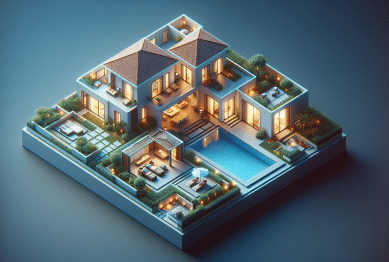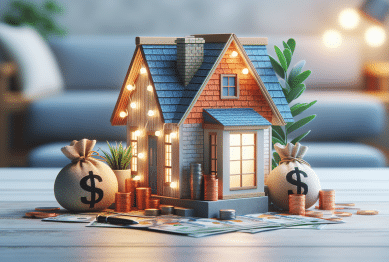Curious about luxury apartments and their influence on modern city life? This guide explores how high-rise residences shape urban neighborhoods, the lifestyle they offer, factors driving demand, and considerations before making a move. Learn what sets these properties apart and how they transform city skylines.
Why Luxury Apartments Are Reshaping City Skylines
Luxury apartments have become synonymous with both status and convenience in major metropolitan areas. Developers pour resources into building sleek towers adorned with floor-to-ceiling windows, high-end amenities, and impeccable security. Each new building competes to offer unique experiences. Heated pools, rooftop lounges, and pet-friendly services now come standard. These additions are more than lavish touches — they set the benchmark for urban living and appeal to those seeking comfort and modernity in the heart of bustling cities. (Source: https://www.urban.org/urban-wire/what-drives-demand-luxury-housing)
Skyline transformation is not just about aesthetics. When luxury apartments rise, they often signal broader changes within urban neighborhoods. The influx of wealthy residents can attract premium retailers, trendy eateries, and cultural venues. This shift can reshape the character of entire districts, leading to a more cosmopolitan vibe. Yet, it can also raise valid concerns about gentrification and the displacement of long-term residents as rental prices increase. Understanding these dynamics helps frame the broader impact of luxury developments. (Source: https://www.pewtrusts.org/en/research-and-analysis/blogs/stateline/2018/07/23/rise-of-luxury-apartments-drives-up-skyline-and-housing-costs)
Another driver of luxury apartment construction is land scarcity in sought-after city centers. Vertical growth becomes a necessity when horizontal space is limited. High-rise residential buildings maximize land use and fuel demand for nearby infrastructure. Features like fitness centers, concierge services, and prime locations cater to professionals who desire close proximity to offices and entertainment, reducing commute times and enhancing overall quality of life. As urban planners observe, such developments are reshaping the definition of ‘downtown living’ for a new generation of tenants. (Source: https://www.nar.realtor/magazine/real-estate-news/why-luxury-apartments-are-changing-urban-areas)
The Appeal And Features of Luxury Apartments
So, what sets luxury apartments apart from standard dwellings? First, construction quality is often a key differentiator. Developers use durable materials and intricate design elements, ensuring that each residence feels exclusive and contemporary. Open floor plans, high ceilings, smart home integrations, and panoramic city views create a sense of abundance and freedom. Residents find that well-insulated windows and advanced climate control elevate comfort, while privacy is considered in every design decision.
Amenities define the luxury experience even further. Many high-end properties feature resort-style health clubs, steam rooms, and even on-site spas. Rooftop gardens and dedicated co-working spaces are increasingly common. These communal areas help build a sense of community among residents — a feature that appeals to young professionals and families alike. Comprehensive security systems provide peace of mind, allowing occupants to enjoy the city’s vibrancy without worry.
Location remains crucial. Luxury residences often occupy coveted sites near cultural landmarks, parks, or business districts. Easy access to public transportation, entertainment venues, and gourmet dining adds to daily convenience. For those who prize aesthetics, the buildings themselves become iconic additions to city skylines. Many are designed by renowned architects, making them as much a statement as a place to call home. (Source: https://www.nahb.org/news-and-economics/industry-news/press-releases/the-growing-demand-for-luxury-apartments)
Factors Driving Demand For Upscale Residences
The surge in luxury apartment demand is not random. Multiple social and economic trends have converged, making these homes popular among urban dwellers. One core driver is the increased number of high-income professionals working in global cities. Many prefer to rent rather than purchase, valuing flexibility over long-term commitment. For some, renting affords access to premium living standards without the need for a large down payment or mortgage.
Urbanization plays a secondary yet vital role. As more people flock to metropolitan areas, competition for quality housing intensifies. Developers respond by building upward, using luxury apartments as a differentiator. International buyers — attracted by investment opportunities or second-home potential — have also contributed to the boom. Demand is further supported by shifting consumer priorities: convenience, work-life balance, and amenities now rank above sheer square footage. These factors collectively reshape housing expectations. (Source: https://www.brookings.edu/articles/understanding-urban-growth-the-rise-of-luxury-housing/)
Technological innovation enhances desirability as well. Modern luxury apartments showcase energy-efficient appliances, built-in smart home controls, and sustainable design. Tenants appreciate both the environmental and practical benefits — lower utility bills, advanced security, and seamless living. As a bonus, ongoing maintenance and repairs are handled by professional staff, removing one of the main anxieties of city living. Such features not only attract affluent younger renters but also appeal to retirees downsizing from single-family homes. (Source: https://www.nmhc.org/news/nmhc-news/rising-trends-in-multifamily-apartment-living/)
Challenges And Considerations Before Signing A Lease
While luxury apartments offer clear advantages, they also come with unique challenges. Monthly rent is higher than in traditional units, as are associated expenses. Beyond cost, the application process is often rigorous — thorough background, income, and credit checks are standard. Prospective tenants may also need to pay substantial security deposits and commit to lengthy contracts. For some, these requirements are prohibitive or lead to second thoughts.
Another consideration is the evolving landscape of building regulations and city ordinances. Luxury developments are often at the center of debates about affordable housing and zoning. Residents may face unexpected changes in tax policy, maintenance rules, or access to communal facilities. Therefore, it is wise to learn about local ordinances and the financial stability of property managers prior to entering lease agreements. A thorough review of lease terms can prevent surprises down the line.
Not all luxury apartments deliver equal value. The term ‘luxury’ is unregulated, so it’s important to focus on tangible features — energy efficiency, soundproofing, and reliable services. Exploring several properties and comparing amenities can help sort substance from marketing. Reviews by current residents often yield insight into the daily reality of life in a high-end building. Independent neighborhood data from public sources may also inform decisions about safety and lifestyle compatibility.
How Luxury Apartments Influence Urban Neighborhoods
The presence of premium residences frequently sparks renewal in aging districts. New construction attracts businesses eager to serve affluent residents. High-end retail, specialty grocers, art galleries, and fitness studios cluster near these buildings. Nearby services and robust public infrastructure benefit not only residents but also workers and visitors. Economic activity increases, contributing to broader urban revitalization. (Source: https://www.lincolninst.edu/publications/articles/luxury-housing-gentrification-cities)
However, this process brings potential drawbacks. Rising rents and increased property values may price out long-standing residents. Gentrification risks are real, particularly when demand for luxury units eclipses supply of affordable housing. While city governments often attempt to mitigate negative impacts through mixed-income building requirements, actual results depend on policy execution and enforcement. Social equity and neighborhood cohesion should inform discussions about future development.
Community engagement is a positive aspect of some projects. Certain developers partner with local organizations to create shared gardens or host events open to all, not just building residents. Public art, green space, and improved transit access can provide lasting neighborhood benefits. For cities seeking inclusive growth, balancing luxury development with accessible housing is key to ensuring vibrant and diverse urban communities.
What To Look For In Your Next Urban Home
Finding the right luxury apartment starts with personal priorities. Begin by listing must-have amenities: a gym, rooftop terrace, secure parking, or tech-enabled features. Researching local market trends provides insight into fair pricing and expected features. Visiting in person — when possible — allows assessment of light, space, noise, and neighborhood atmosphere. Photos rarely tell the whole story. Professional agents can also share neighborhood insights.
It’s crucial to review lease terms closely. Check details about maintenance response times, guest policies, and potential rent increases. Some buildings are pet-friendly, while others may have strict policies. Confirm what’s included in monthly fees: utilities, high-speed internet, or storage lockers may or may not be part of the package. Speaking with current tenants often provides a more accurate picture of day-to-day living than promotional materials alone.
Finally, weigh luxury against practicality. Not every premium amenity is necessary for every resident. Evaluate what will contribute to daily comfort versus features that are rarely used. Location, security, and sustainability often prove most valuable over time. By carefully balancing aspiration and practicality, it’s possible to find an urban home that fits both lifestyle and budget while embracing the changing face of city living.
References
1. Urban Institute. (n.d.). What Drives the Demand for Luxury Housing? Retrieved from https://www.urban.org/urban-wire/what-drives-demand-luxury-housing
2. Pew Charitable Trusts. (2018). Rise of Luxury Apartments Drives Up Skyline and Housing Costs. Retrieved from https://www.pewtrusts.org/en/research-and-analysis/blogs/stateline/2018/07/23/rise-of-luxury-apartments-drives-up-skyline-and-housing-costs
3. National Association of Realtors. (n.d.). Why Luxury Apartments Are Changing Urban Areas. Retrieved from https://www.nar.realtor/magazine/real-estate-news/why-luxury-apartments-are-changing-urban-areas
4. NAHB. (n.d.). The Growing Demand for Luxury Apartments. Retrieved from https://www.nahb.org/news-and-economics/industry-news/press-releases/the-growing-demand-for-luxury-apartments
5. Brookings Institution. (n.d.). Understanding Urban Growth: The Rise of Luxury Housing. Retrieved from https://www.brookings.edu/articles/understanding-urban-growth-the-rise-of-luxury-housing/
6. Lincoln Institute of Land Policy. (2020). Luxury Housing and Gentrification in Cities. Retrieved from https://www.lincolninst.edu/publications/articles/luxury-housing-gentrification-cities









